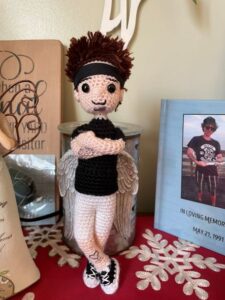 By Saundra McBrearty, Outreach and Volunteer Specialist
By Saundra McBrearty, Outreach and Volunteer Specialist
I relish the rejuvenating hours of shut eye as I zonk out and sleep through the long, dark, and chilly winter nights. And I wonder … do birds sleep like we sleep?
Yes, birds sleep, but they don’t zonk out like I do. Their muscles stay toned throughout sleep, and it doesn’t matter if the bird is a species that stands, perches, roosts, lies down, swims, or hangs upside down. With muscles ready to work, birds can react to predators, cold weather, and other threats.
Did you know some birds sleep with one eye open? Half of the brain remains alert while the other is asleep! This amazing – though spooky – superpower is called unihemispheric slow-wave sleep (USWS). It allows the sleeping bird to quickly hop into action from a resting state if threatened. A sleeping bird can adjust how much of its brain is asleep by how wide it opens or closes its eye. Peregrine Falcons and Eurasian Blackbirds are two species that do this well.
Species that use USWS may even be able to sleep while flying! Ducks and waterfowl are particularly good at this and will take advantage of USWS as they fly in J or V formations. The long migration flights of many species don’t allow for many chances to stop and rest. But a bird using USWS may both sleep and navigate at the same time. There is evidence that the Alpine Swift can fly non-stop for 200 days, sleeping in flight.
Although sleeping with one eye open is efficient, I am grateful to be able to sleep soundly and not worry about predators. What’s your opinion?








